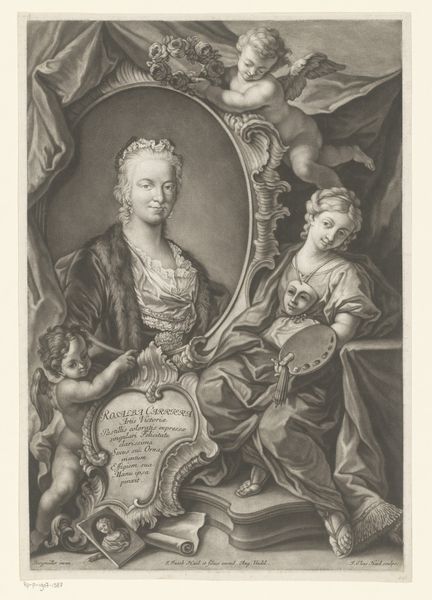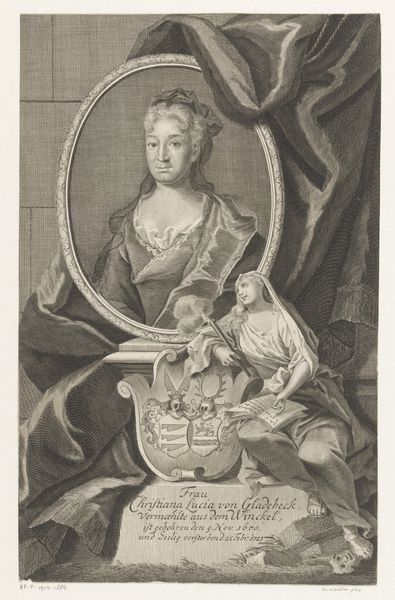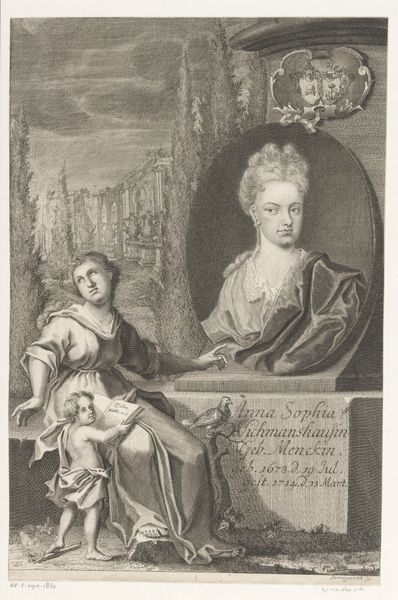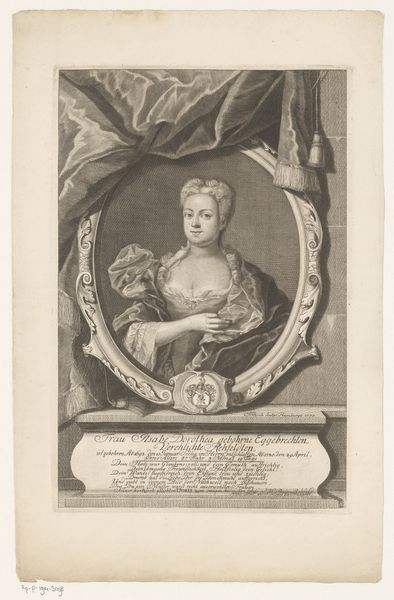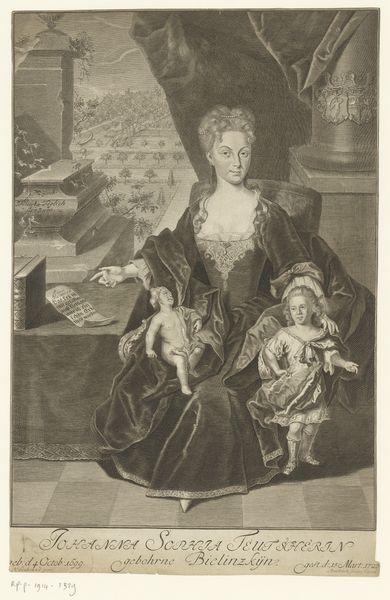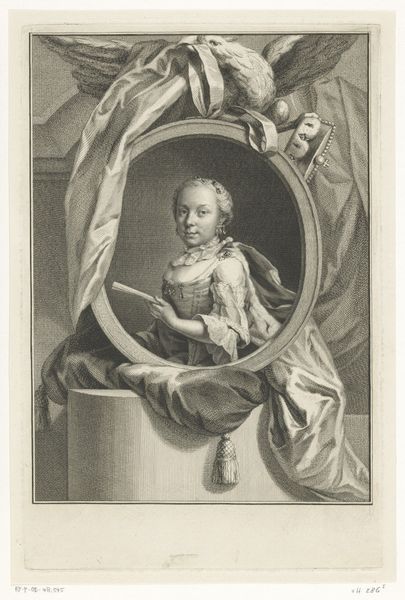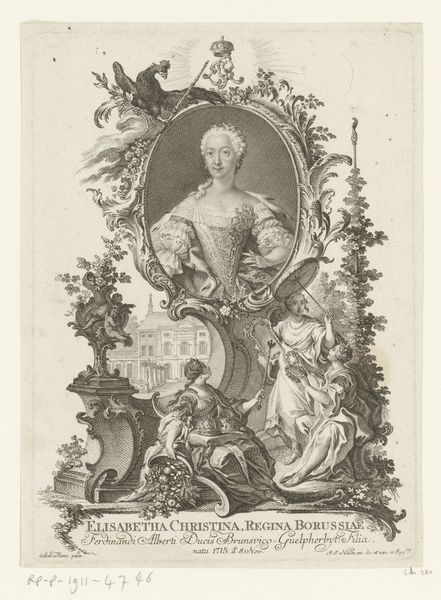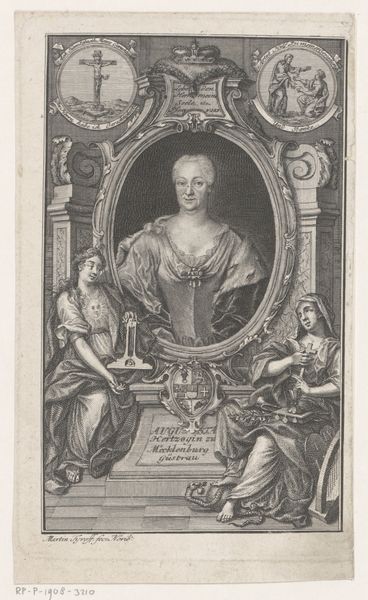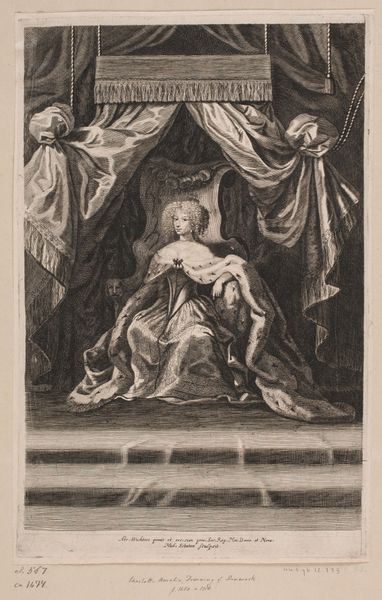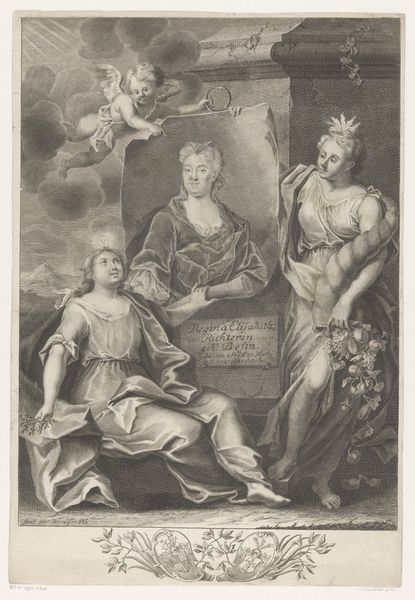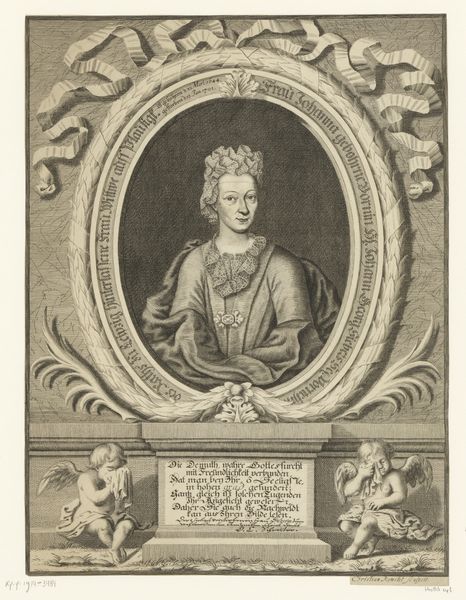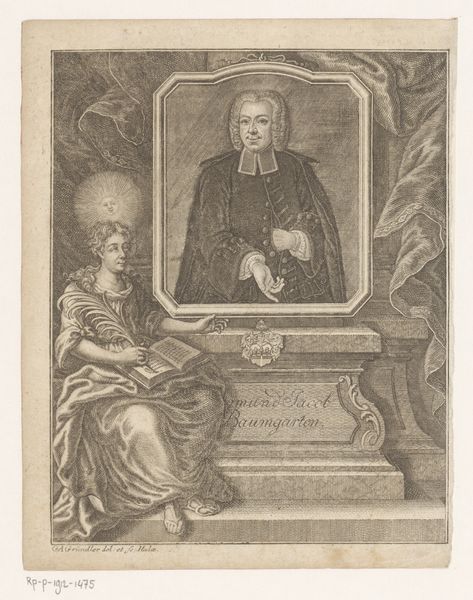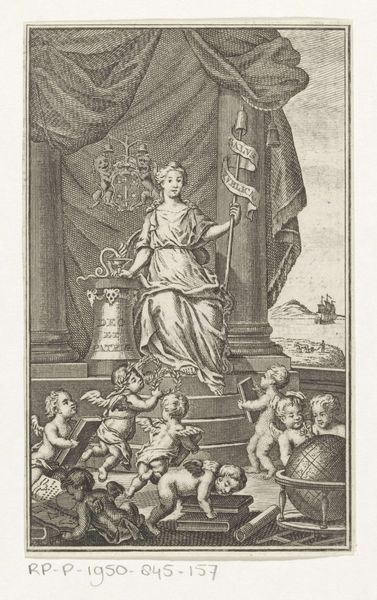
engraving
#
portrait
#
baroque
#
charcoal drawing
#
portrait drawing
#
history-painting
#
academic-art
#
engraving
Dimensions: height 336 mm, width 230 mm
Copyright: Rijks Museum: Open Domain
Curator: This engraving from somewhere between 1710 and 1733 presents us with a "Portret van Johann Christiana Jöcher" by Martin Bernigeroth, currently residing at the Rijksmuseum. I'm struck by how meticulously rendered it is. What do you see at first glance? Editor: I’m immediately drawn to the interplay of textures; the smooth, reflective surface of what seems like a mirror contrasts with the rough drapery and the dense cross-hatching that defines the shadows. The labour involved in creating this, reproducing it, really demands attention. Curator: The engraving's composition certainly reflects a Baroque sensibility, wouldn’t you agree? Consider the dynamism created by the asymmetrical framing, and the almost theatrical draping of the fabric. And of course, the woman at the bottom seems to gesture and participate. Editor: Absolutely, it's a performance of status. Looking closely, the material richness implied by the layering of her clothes—the velvet-like fabric, the lace details, the decorative accents—tells me this was a commission. The skill invested speaks to both the engraver's prowess and the patron's resources. Who was Jöcher, do we know? Curator: Indeed. The subject was apparently born Bohn, became Verjöhichte Jöcherin. This academic approach to portraiture sought to immortalize, to solidify the legacy and virtue of the subject through allegorical additions. The dog is an image for loyalty and virtue, isn’t it? Editor: Loyalty and virtue...Or control, subjugation even. Bernigeroth certainly mastered the technical process, manipulating the plate to produce different depths and tones. The subtle gradations elevate it beyond mere representation, inviting an almost tactile appreciation for the materials used. But let's not forget how reliant on access it was; these kinds of images are never truly accessible in material terms, are they? Curator: Well said! The density of details allows for a rewarding formal examination of visual balance, of positive and negative space... there is much to decode here. Editor: For me, I see the portrait not just as an artwork, but as an artifact—testimony to labor and resources, and access and power of this long dead matriarch.
Comments
No comments
Be the first to comment and join the conversation on the ultimate creative platform.
